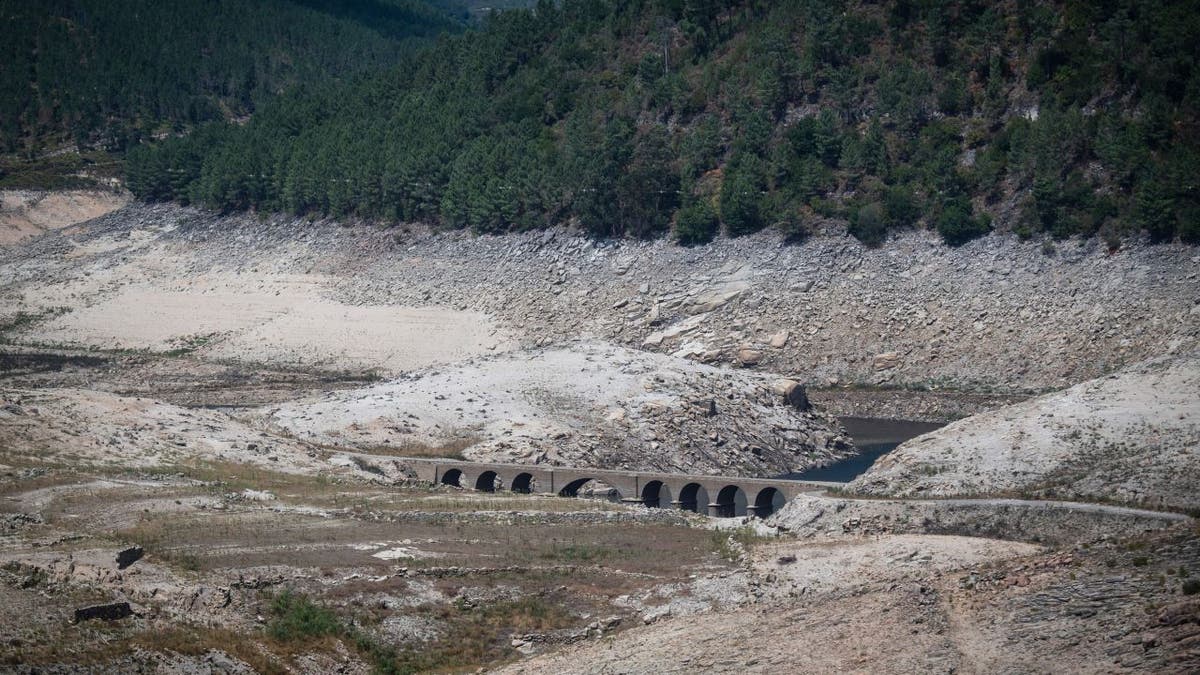Fox News Flash top headlines for August 30
Fox News Flash top headlines are here. Check out what's clicking on Foxnews.com.
A severe drought in Europe has caused water levels to drop to the point where a previously submerged complex of Roman ruins is now visible.
The ancient Roman complex that began as a military camp when it was first constructed in 75 AD along the Lima River in the Galicia region of Spain is visible after being abandoned centuries ago and fully submerged after the construction of a dam in 1949, The Charlotte-Observer reported.
The complex, known as Aquis Querquennis, housed up to 600 Roman soldiers in its heyday and consisted of multiple barracks, two granaries, a hospital, a temple, and thermal baths.
The full complex became visible, along with the ruins of other abandoned towns, once water levels at the As Conchas reservoir fell to 49% capacity as the continent continues to struggle with a historic drought.
WEATHER WHIPLASH: FROM DROUGHTS TO FLOODS ACROSS THE GLOBE

The normally submerged bridge of the once village of Aceredo is seen after emerging due to the low water level of the Lindoso reservoir, near Lobios, Ourense province, northwestern Spain, on August 25, 2022. ((Photo by MIGUEL RIOPA/AFP via Getty Images))
Drone footage posted on Friday by Faro de Vigo showed large swaths of the complex that are now visible due to the lowered water levels.
Almost half of the 27-nation European Union is under drought warning, with conditions worsening in Belgium, France, Germany, Hungary, Ireland, Italy, Luxembourg, the Netherlands, Portugal, Romania and Spain. The report also noted rising drought hazards outside the EU, in Britain, Serbia, Ukraine and Moldova.
"Warmer and drier than usual conditions are likely to occur in the western Euro-Mediterranean region in the coming months till November 2022," notably in Spain and Portugal, the EU’s Copernicus program said in a report for the month of August.
DINOSAUR TRACKS UNEARTHED IN TEXAS STATE PARK AS DROUGHT DRIES RIVER

Roman military camp of Aquis Querquennis (Porto Quintela). Occupied between the last quarter of the 1st century until the middle of 2nd century. (Photo by: PHAS/Universal Images Group via Getty Images)
Water shortages and heat stress are also reducing European crop yields, with maize, soybeans, and sunflowers hardest hit. Recent rainfall in August has helped some regions, but crops in other areas have been battered by thunderstorms.
The report comes amid what experts say could be the continent’s worst drought in 500 years.
CLICK HERE TO GET THE FOX NEWS APP
Associated Press contributed to this report

